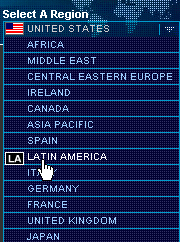Multilingual Computing has published a very useful supplement on best practices in Web globalization.
You can download a copy here. The following is an excerpt from an article that I contributed:
There is no such thing as “rest of world.”
There is good reason why movie executives in Hollywood often ask if a film with “play in Peoria” before releasing it. The United States may be one country, but it is made up of countless cultures and subcultures, based on region, ethnicity, and income. Marketing executives have learned to tailor — (in other words) localize — their promotional efforts to these various groups. Unfortunately, when these same marketing directors take their promotional campaigns to markets outside the U.S., they often do not realize that just as many subtleties exist in other countries, cultures, and regions. Similar challenges exist in Web globalization.
For example, companies often assume that if they translate their site into Spanish that the new site will reach all Latin Americans. Consider Boston Scientific, which built a “Latin American” Web site (the global gateway is shown below). The first problem presented by the Latin American site is that the gateway uses flags for navigation and there is no such thing as a Latin American flag (a good reason to avoid using flags for navigation).

Boston Scientific comes up a flag short for its Latin American site
Yet the flag is a minor detail compared with the Latin American site itself. Naturally, the site is in Spanish, but what flavor of Spanish? There is no such as thing as one Spanish, just as there is no such thing as one English. And where is the Portuguese for Brazilian Web users?
As companies expand outside their native countries, they tend to break up the world into regions: EMEA (Europe, Middle East, Africa), Asia Pacific, the Americas, or worse: ROW (rest of world). Although these groupings do offer a sense of order, they can be dangerous because they lead executives to assume that the people within these regions have more in common than just geography.
Granted, companies have a long, long way to go before they provide Web sites localized for every country, culture, and subculture. But what they can begin doing today is working toward a new way of looking at the world outside their native market — a more personal, less regional, less ROW view of the world.
